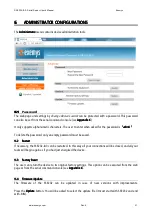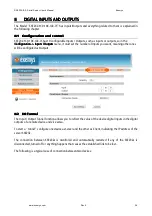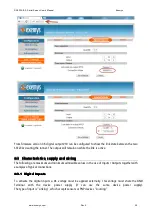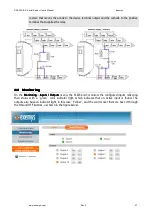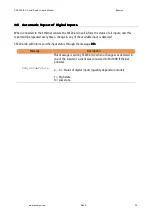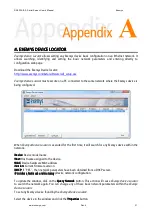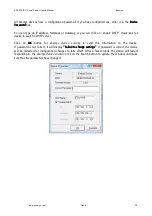
SSE232-IA3 – Serial Server- User’s Manual
Exemys
www.exemys.com
Rev.4
17
4.3
4.3
4.3
4.3
UDP Point
UDP Point
UDP Point
UDP Point----to
to
to
to----Point Tunnel
Point Tunnel
Point Tunnel
Point Tunnel
In point-to-point connection in UDP Client-Client, once the link between two SSE232 is established, the
received data in a serial port will be sent by the remote serial port and vice versa. The operation is very
similar to the TCP serial tunnel.
You can also make a connection in UDP Client - Server, but this one presents a disadvantage. If the
SSE232 configured in server mode receives data on its serial port, before receiving data from the client
SSE232, the data will be lost because it will not know where to send the data. This happens because UDP
is a protocol that does not establish connections prior to the sending of data as if it happens in TCP.
The following figure shows a UDP Client-Client configuration.
4.4
4.4
4.4
4.4
UDP Point
UDP Point
UDP Point
UDP Point----Multipoint Tunnel
Multipoint Tunnel
Multipoint Tunnel
Multipoint Tunnel
This setting is used when you want to send data from a serial port to multiple destinations and all of
them remote points can respond to the central "point".
In this case the central SSE232 must be configured in UDP Broadcast Client mode and the other points in
client mode but indicating the IP address of the central SSE232. All of them must share the same Port and
Local Port number.



















